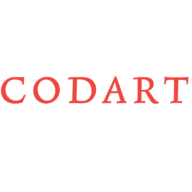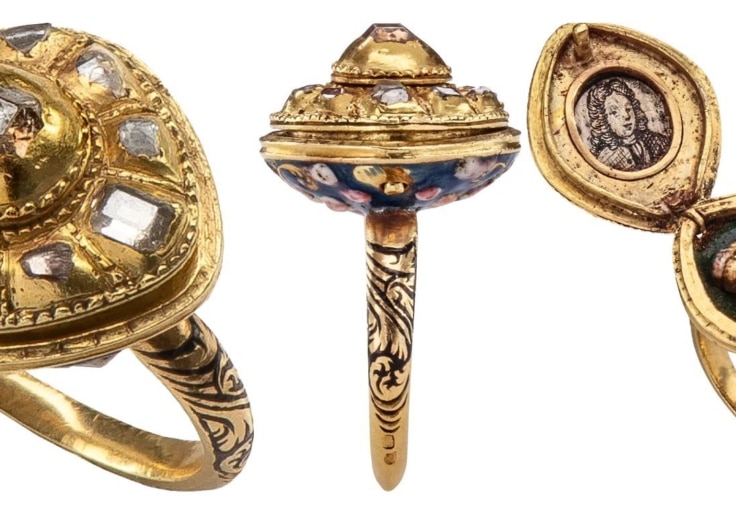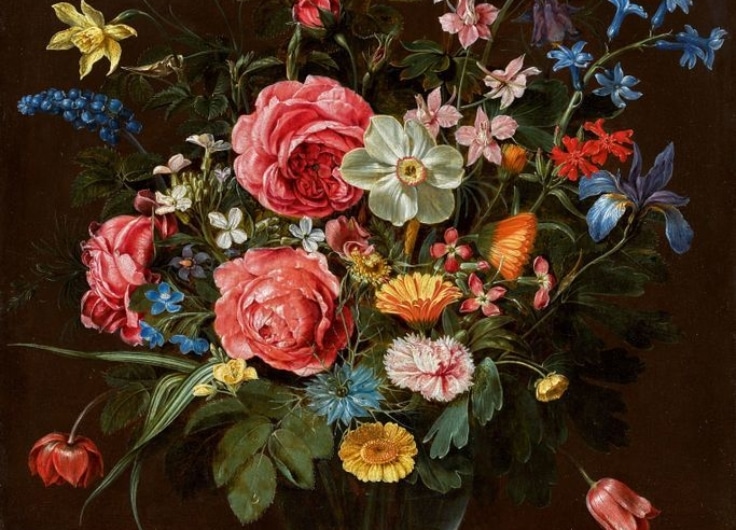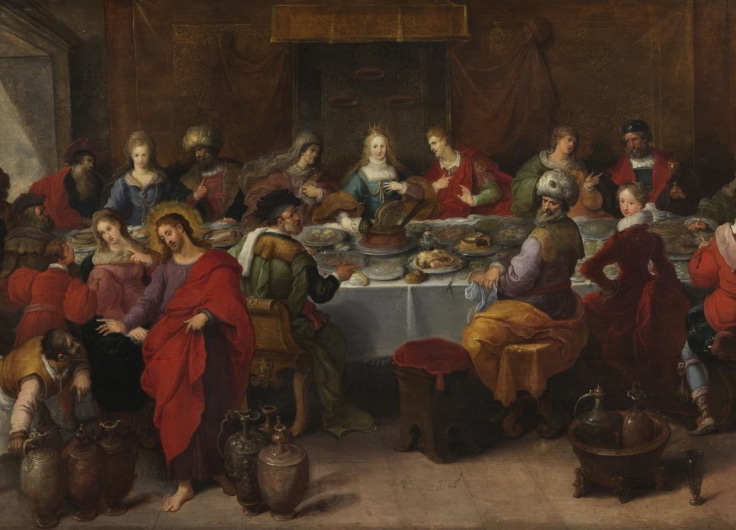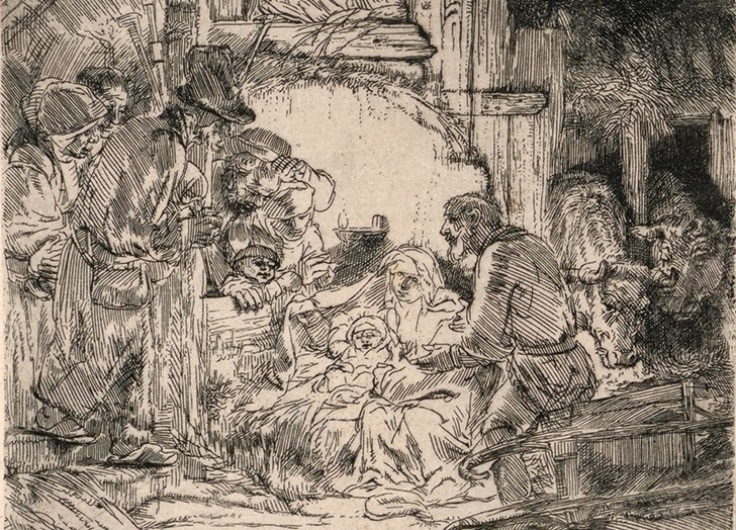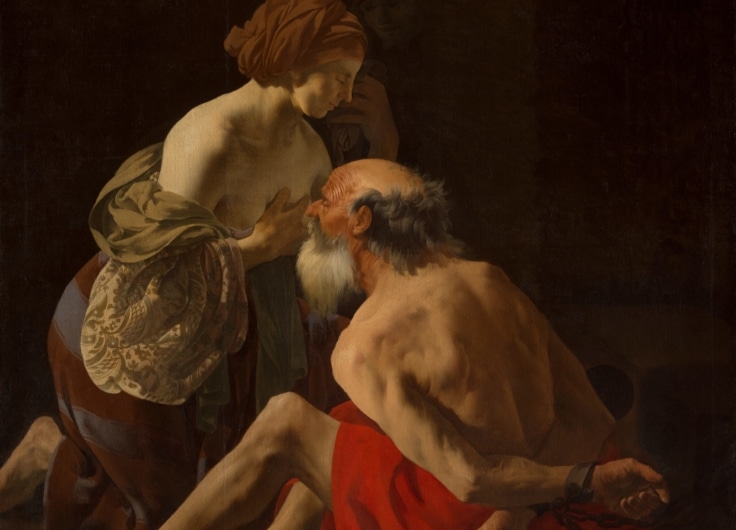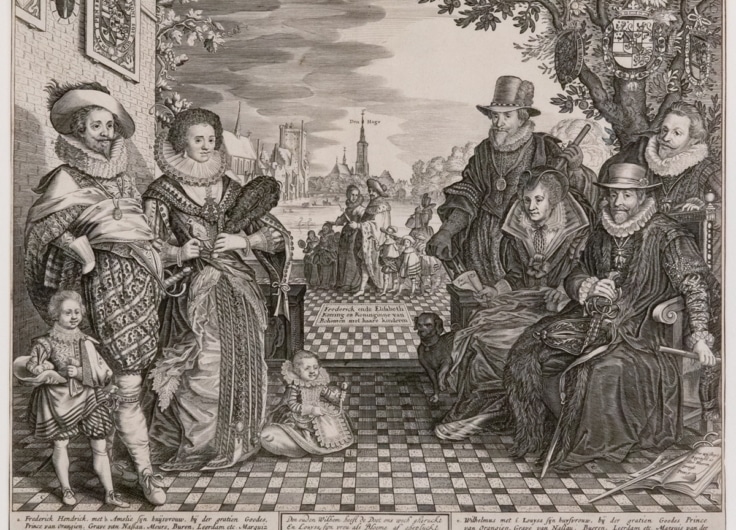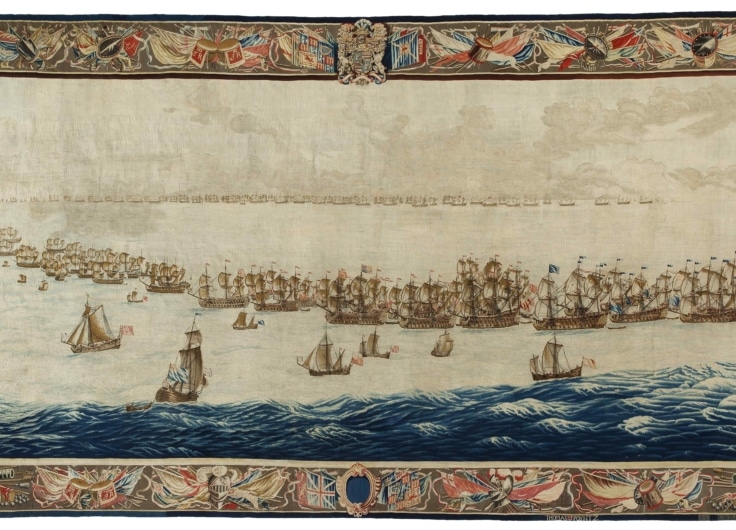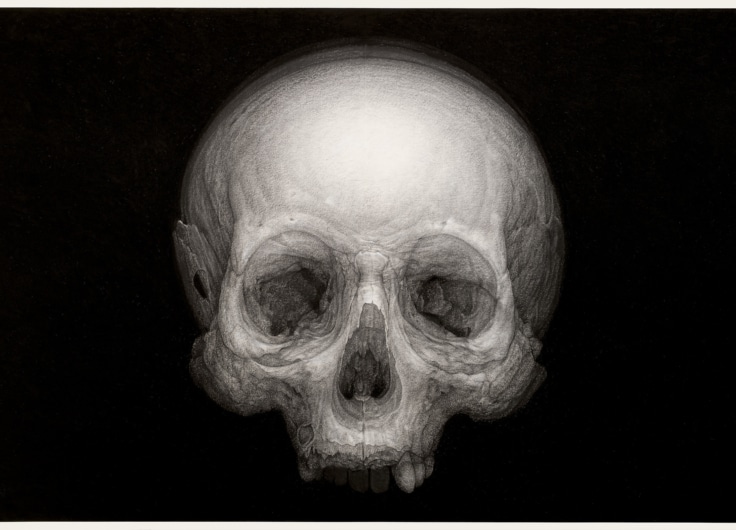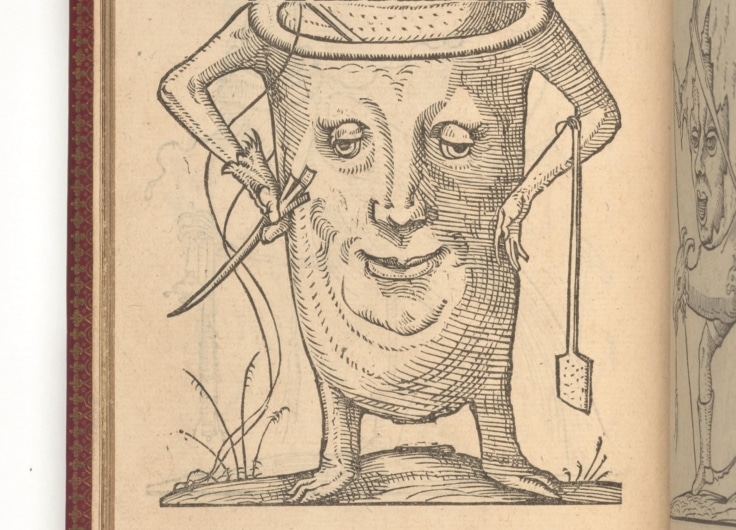For most museums, this summer was a success not only in terms of visitor numbers. Some were also able to enrich their collections by acquiring beautiful early modern Dutch and Flemish art. We briefly list all purchases.
The Cleveland Museum of Art Acquires Drawing by Jacob de Wit
Among recent acquisitions from the Cleveland Museum of Art is a drawing by Jacob de Wit (1695-1754). The highly finished drawing, Jupiter (in the guise of Diana) and Callisto, uses a combination of pen and ink, gouache, and watercolour to tell this well-known story from Ovid’s Metamorphosis. Visiting Arcadia, Jupiter lusts after one of Diana’s followers, Callisto, and seduces her in the guise of Diana.
De Wit portrayed the seduction scene: Jupiter’s eagle, lurking behind Diana’s quiver of arrows, signifies his presence. Meanwhile, Diana and her hunters pursue a stag in the background. The putti, who attempt to shield – or perhaps reveal – the affair with a red textile, create a cascading rhythm to the left of the figural group, joined by three curious, elegant hunting dogs.
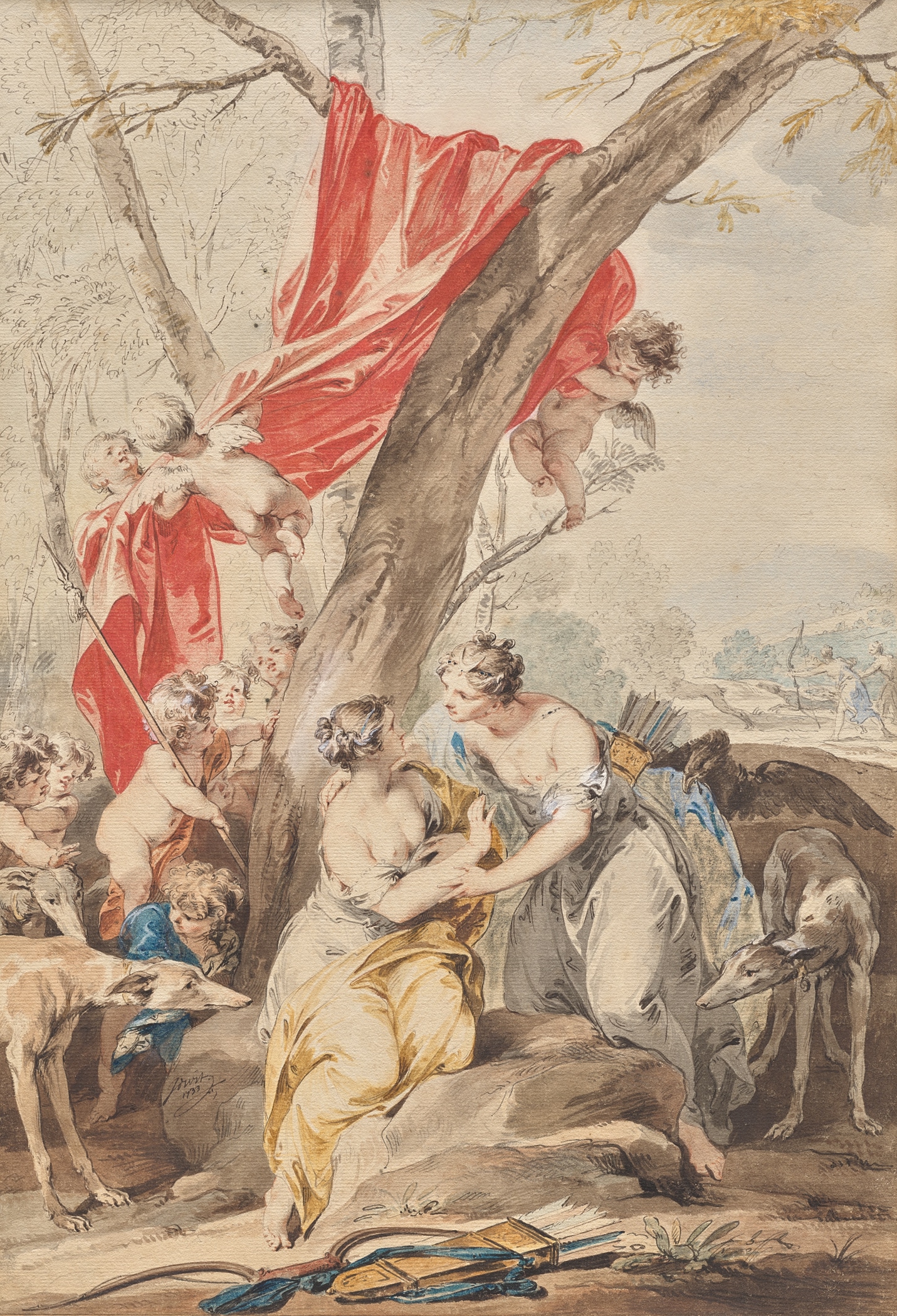 Jacob de Wit (1695–1754), Jupiter (in the guise of Diana) and Callisto, 1733 The Cleveland Museum of Art, Norman O.Stone and Ella A. Stone Memorial Fund, Cleveland
Jacob de Wit (1695–1754), Jupiter (in the guise of Diana) and Callisto, 1733 The Cleveland Museum of Art, Norman O.Stone and Ella A. Stone Memorial Fund, Cleveland© Cleveland Museum of Art
The large, finished drawing is related to two paintings originally meant for the walls of a merchant’s house in Amsterdam. De Wit was among the most sought-after painters in eighteenth-century Amsterdam, where he made his living producing large paintings on commission, intended to be set into the walls and ceilings of the city’s stately canal homes.
Several years after he made the paintings, another Amsterdam merchant, Jonas Witsen, commissioned him to make this and another drawing based on the original schemes. As decorative tastes changed, many of De Wit’s large residential paintings were destroyed, and therefore his drawings play an important role in documenting De Wit’s large-scale commissions as well as his thriving business as an independent draftsman.
Walker Art Gallery Reopens Old Master Galleries with Two New Acquisitions
More than three years after the galleries closed for renovation, Liverpool’s Walker Art Gallery’s medieval, Renaissance and Baroque art returned to the public on 29 July.
‘Renaissance Rediscovered’ comprises around 200 paintings, sculptures and decorative art objects, along with prints and drawings in a dedicated gallery for the first time. The new permanent exhibition features major artists including Michelangelo, Titian, Rubens, Rembrandt and more, as well as two newly acquired works by Hendrick van Steenwyck and Willem van Aelst.
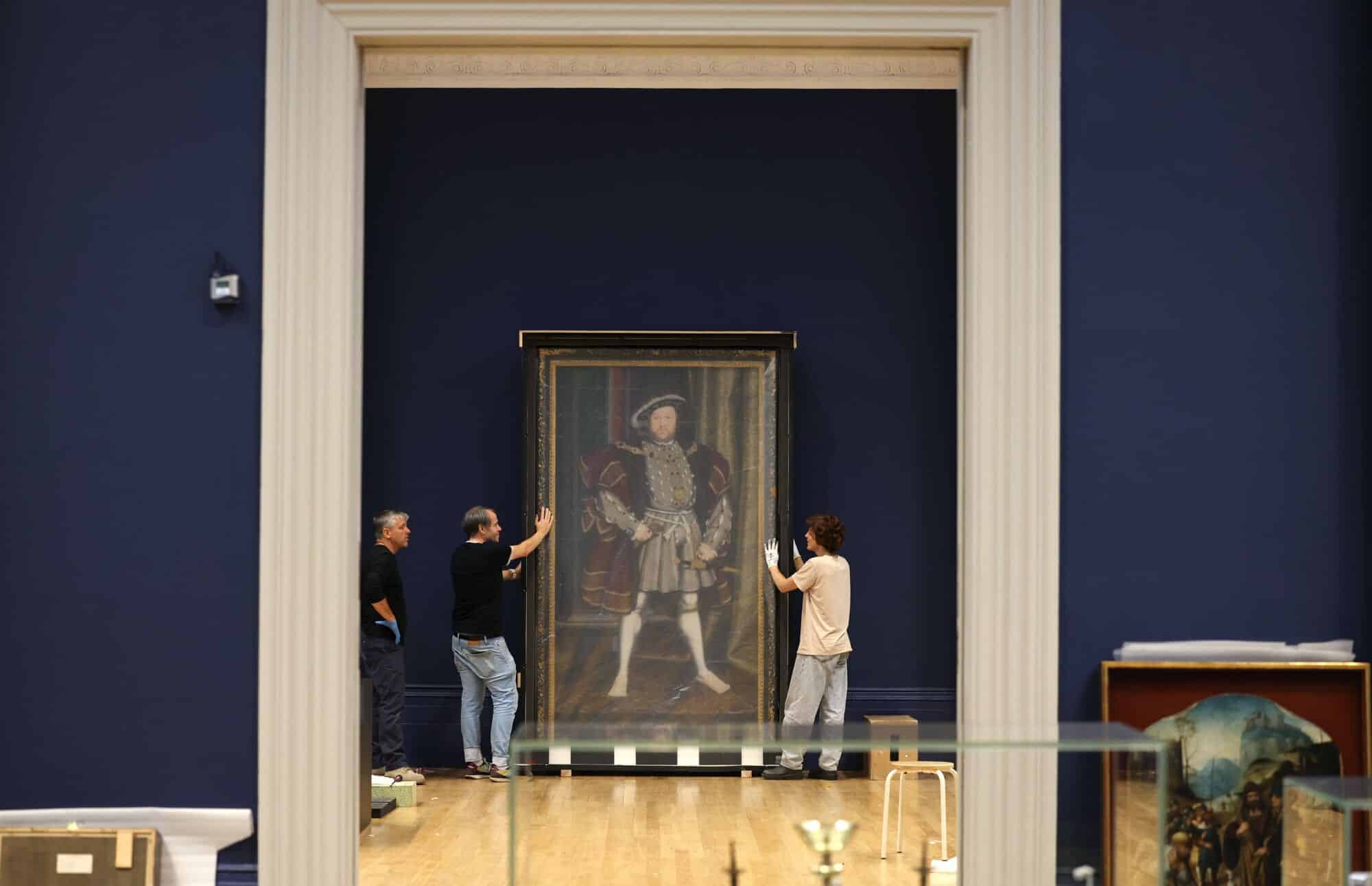 Installation of King Henry VIII (1491-1547), ca. 1537, from the workshop of Hans Holbein the Younger.
Installation of King Henry VIII (1491-1547), ca. 1537, from the workshop of Hans Holbein the Younger.© Walker Art Gallery / photos by Gareth Jones
The new rooms present fresh research exploring diverse histories that have previously been excluded, such as new insights into Black, LGBTQ+ and women’s stories, including Jan Mostaert’s Portrait of a Young Man (around 1520), which is one of the earliest examples of a visible Black presence in the Walker’s collection.
A new digital interactive will bring to life the tapestry, The Triumph of Fortitude (Brussels, about 1525), the largest piece on display. The brave and compelling female characters from mythology and the Old Testament featured within the tapestry are the focus in this new story-telling interactive.
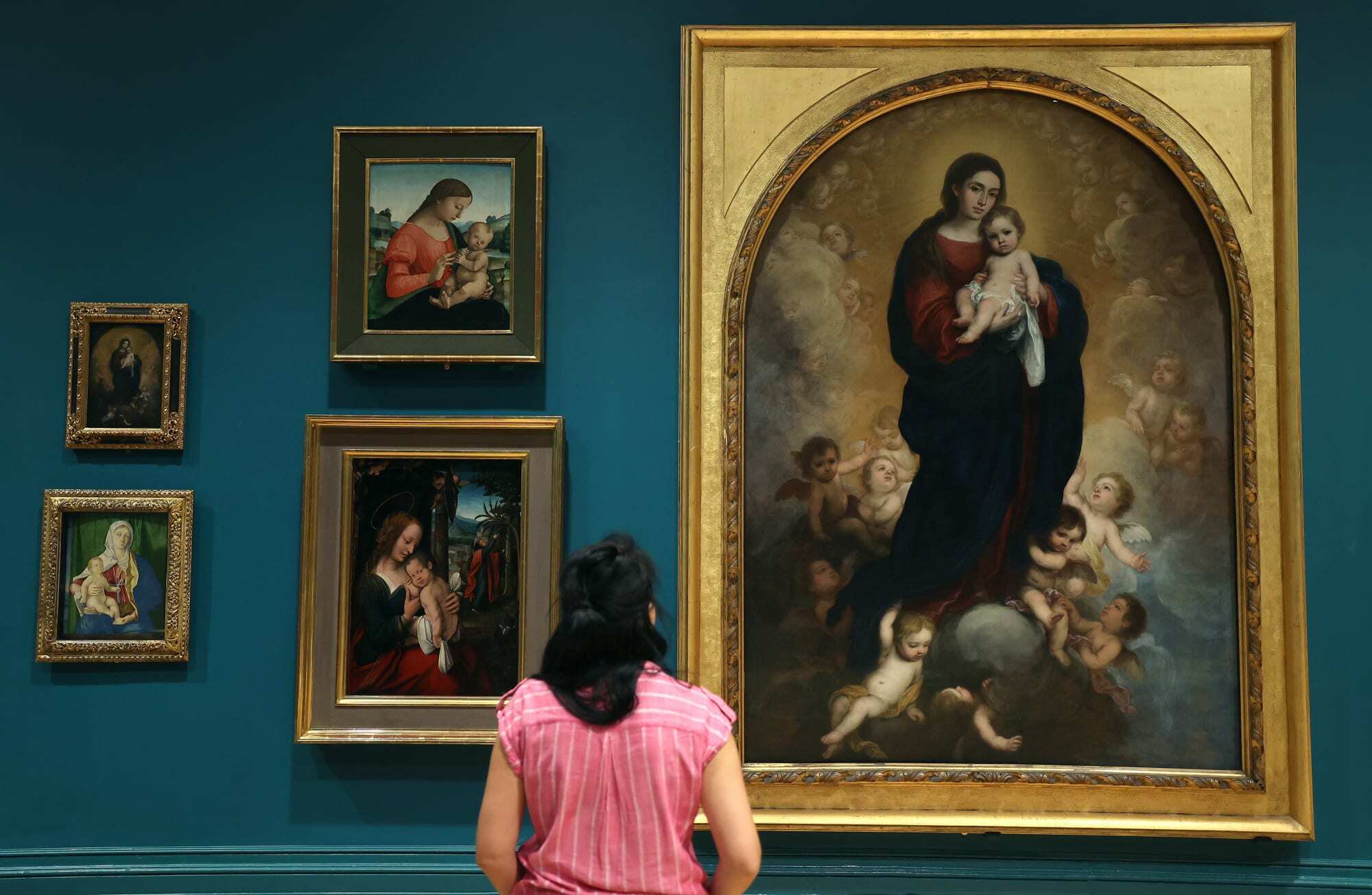 Themed display of ‘Madonna and child’ exploring the cult status of Mary during the Middle Ages.
Themed display of ‘Madonna and child’ exploring the cult status of Mary during the Middle Ages.© Walker Art Gallery / photos by Gareth Jones
The role of the wealthy Victorian collectors who shaped the foundation of the Walker Art Gallery in Liverpool is addressed within the new displays. Joseph Mayer (1803-1886) presented 14,000 objects to the city in 1867, while the MP William Roscoe (1753-1831), purchased many of the most important paintings on display. The same paintings were later bought by the Liverpool Royal Institution, a group of wealthy art patrons who gave its collection to the Walker in 1948.
Liverpool’s economic development grew directly from Britain’s involvement with transatlantic slavery, with many members of the Institution making their fortunes through the abhorrent trade. The opening of ‘Renaissance Rediscovered’ offers an important opportunity to reflect on this legacy and is part of the gallery’s ongoing work to recognize its links to slavery, colonialism and empire.
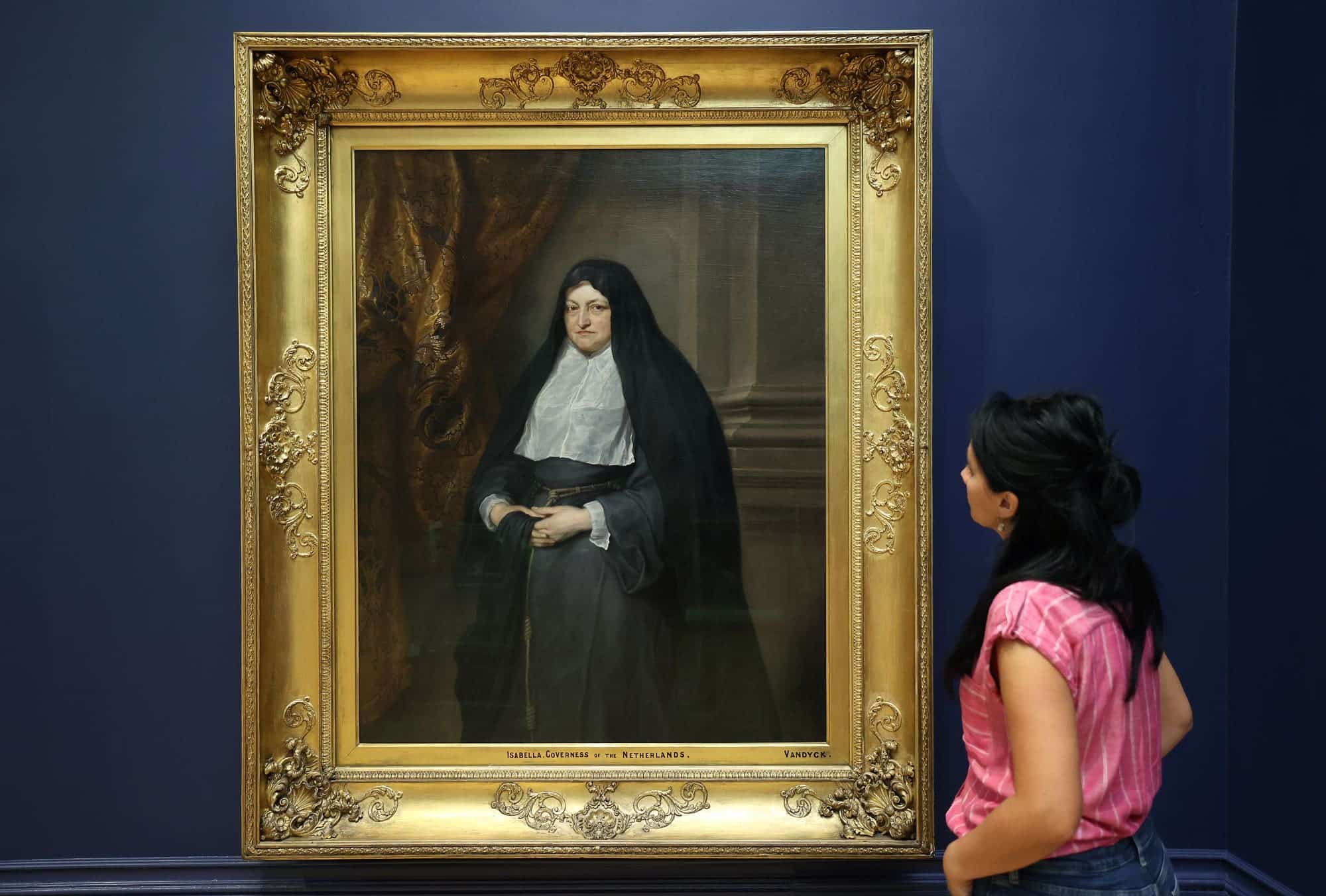 Portrait of the Infanta Isabella Clara Eugenia, painted about 1628-1633 by Anthony van Dyck
Portrait of the Infanta Isabella Clara Eugenia, painted about 1628-1633 by Anthony van Dyck© Walker Art Gallery / photos by Gareth Jones
In recent years, the Walker Art Gallery has been able to acquire two northern old master paintings. These are presented alongside the new galleries for the first time. A Church Interior (ca. 1604-49) by Hendrick van Steenwyck is an example of one of the many church interiors painted by the artist. This one is probably imagined, rather than based on a real place. The use of oil paint on copper was ideal for including fine detail. Also presented for the first time is Still Life with Flowers by Willem van Aelst.
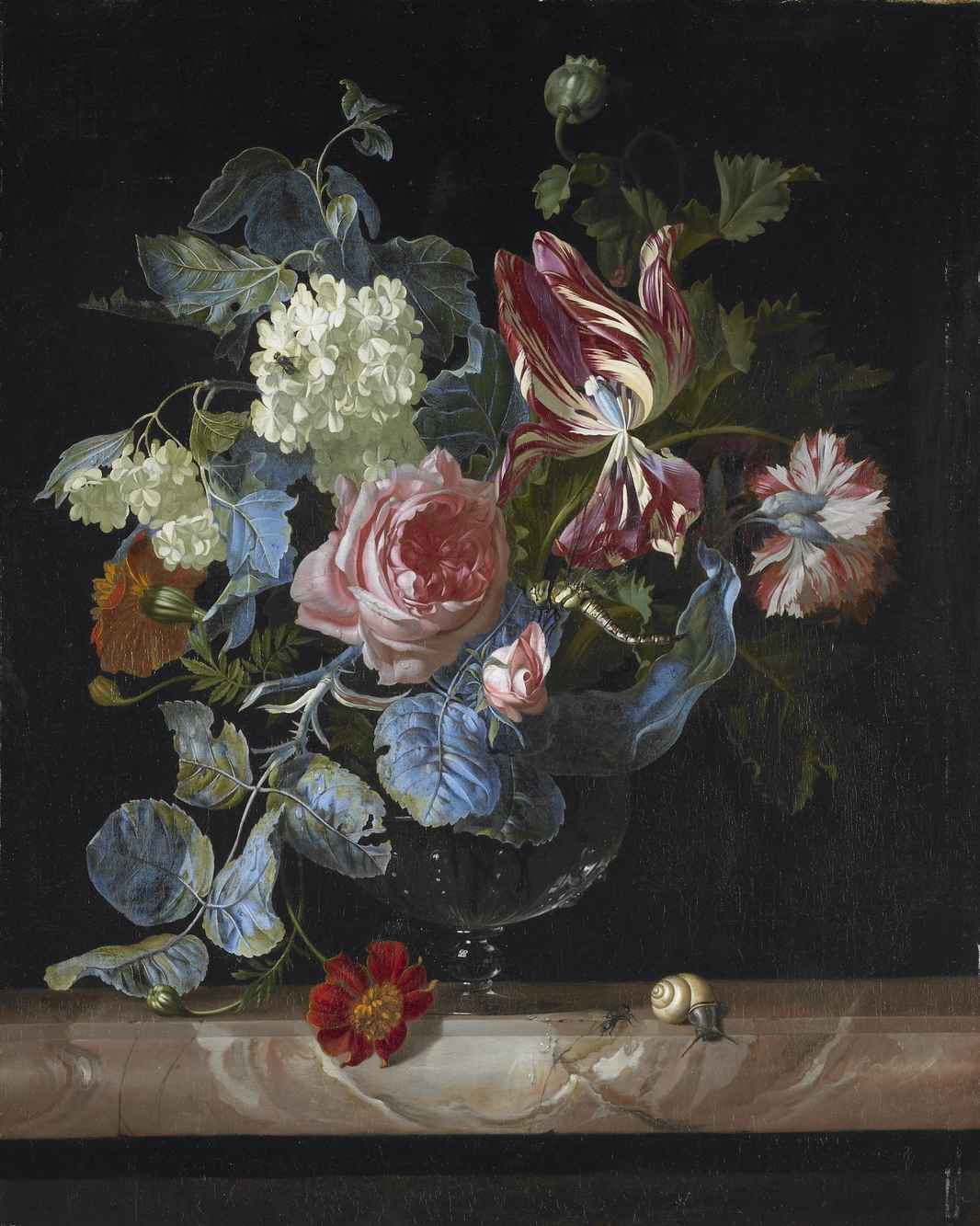 Willem van Aelst (1627-1683), Flowers in a Glass Vase on a Marble Ledge, 1655, Walker Art Gallery, Liverpool
Willem van Aelst (1627-1683), Flowers in a Glass Vase on a Marble Ledge, 1655, Walker Art Gallery, Liverpool© Walker Art Gallery / photos by Gareth Jones
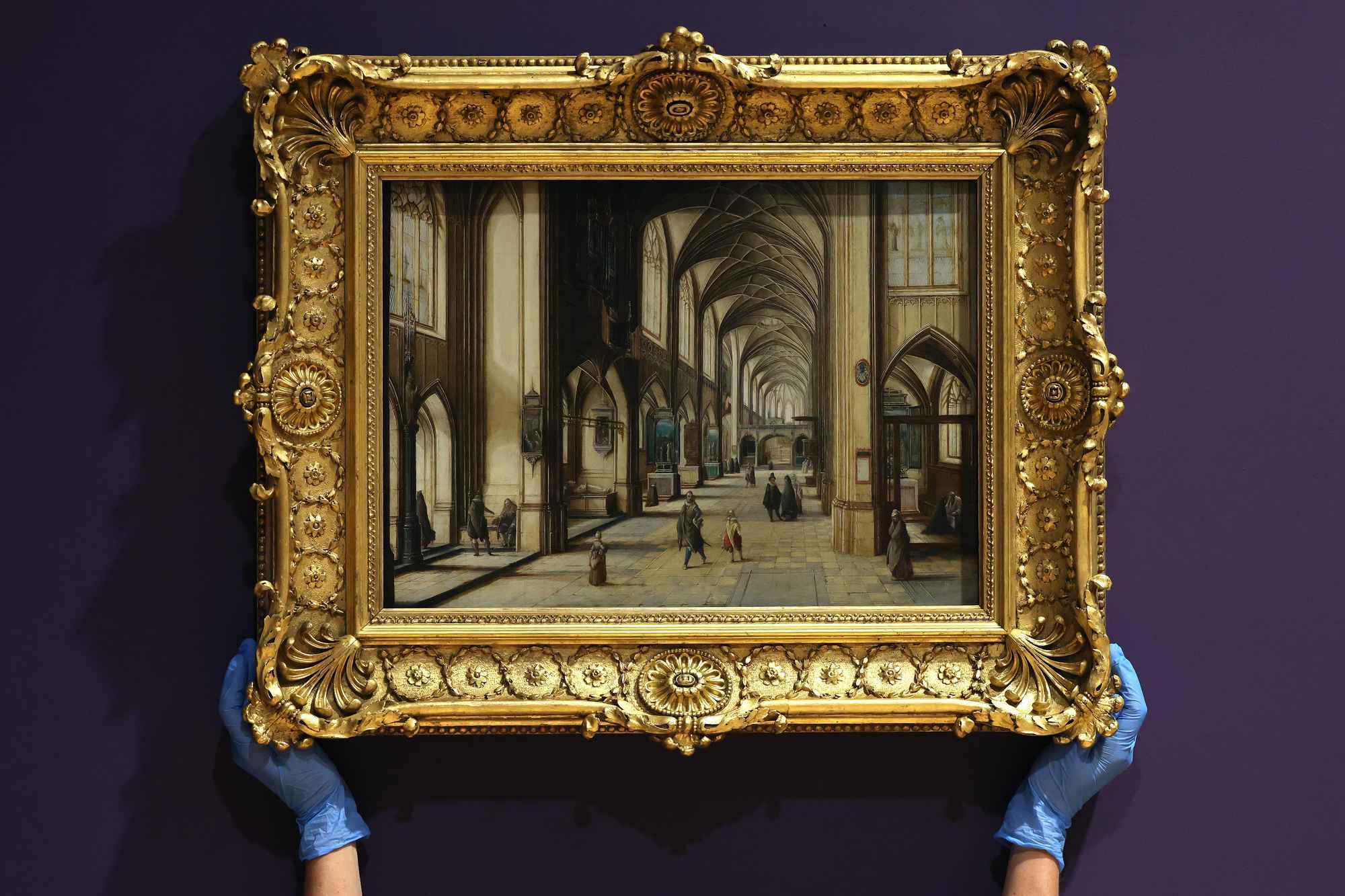 Hendrick van Steenwyck (ca. 1580-1649), A Church Interior, ca. 1604-49 Walker Art Gallery, Liverpool
Hendrick van Steenwyck (ca. 1580-1649), A Church Interior, ca. 1604-49 Walker Art Gallery, Liverpool© Walker Art Gallery / photos by Gareth Jones
Mauritshuis Acquires Painting by Adriaen Brouwer
The Mauritshuis has acquired a painting by the Flemish artist Adriaen Brouwer. Superbia depicts a man curling his mustache with a pair of scissors. It is a rare representation of the Latin concept of ‘Superbia’, which means pride or vanity.
The small panel depicts a man with a red beret curling his mustache using a pair of scissors. The man is shown looking into a mirror, like a snapshot from everyday life. He seems particularly preoccupied with his image, seeking to demonstrate his importance. The paint application is thin, and the background is left smooth and even. The clothing is minimally detailed, with only a few white paint strokes here and there on the collar and cufflinks.
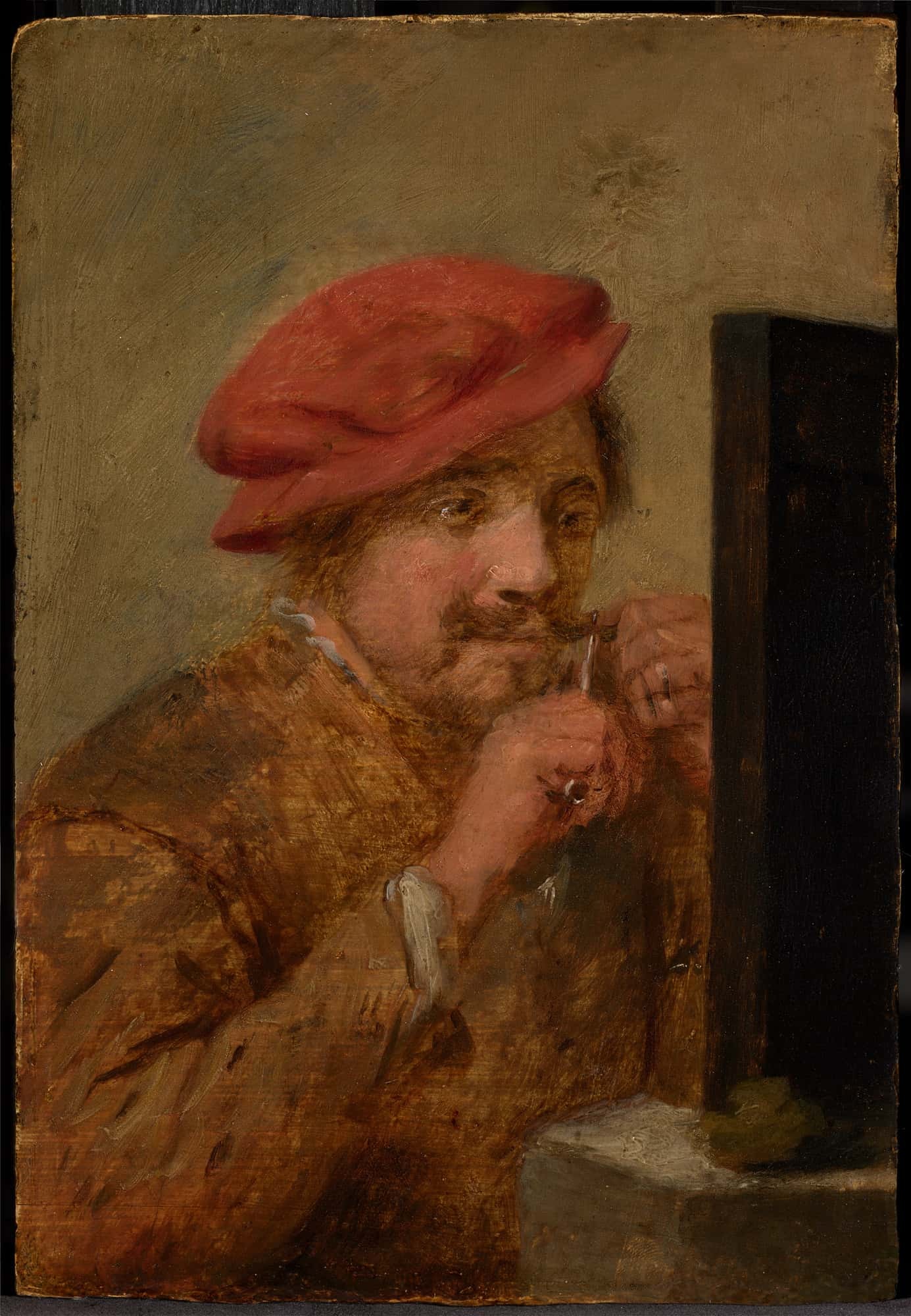 Adriaen Brouwer (ca. 1606-1638), Superbia, ca. 1634-37 Mauritshuis, The Hague
Adriaen Brouwer (ca. 1606-1638), Superbia, ca. 1634-37 Mauritshuis, The Hague© Mauritshuis
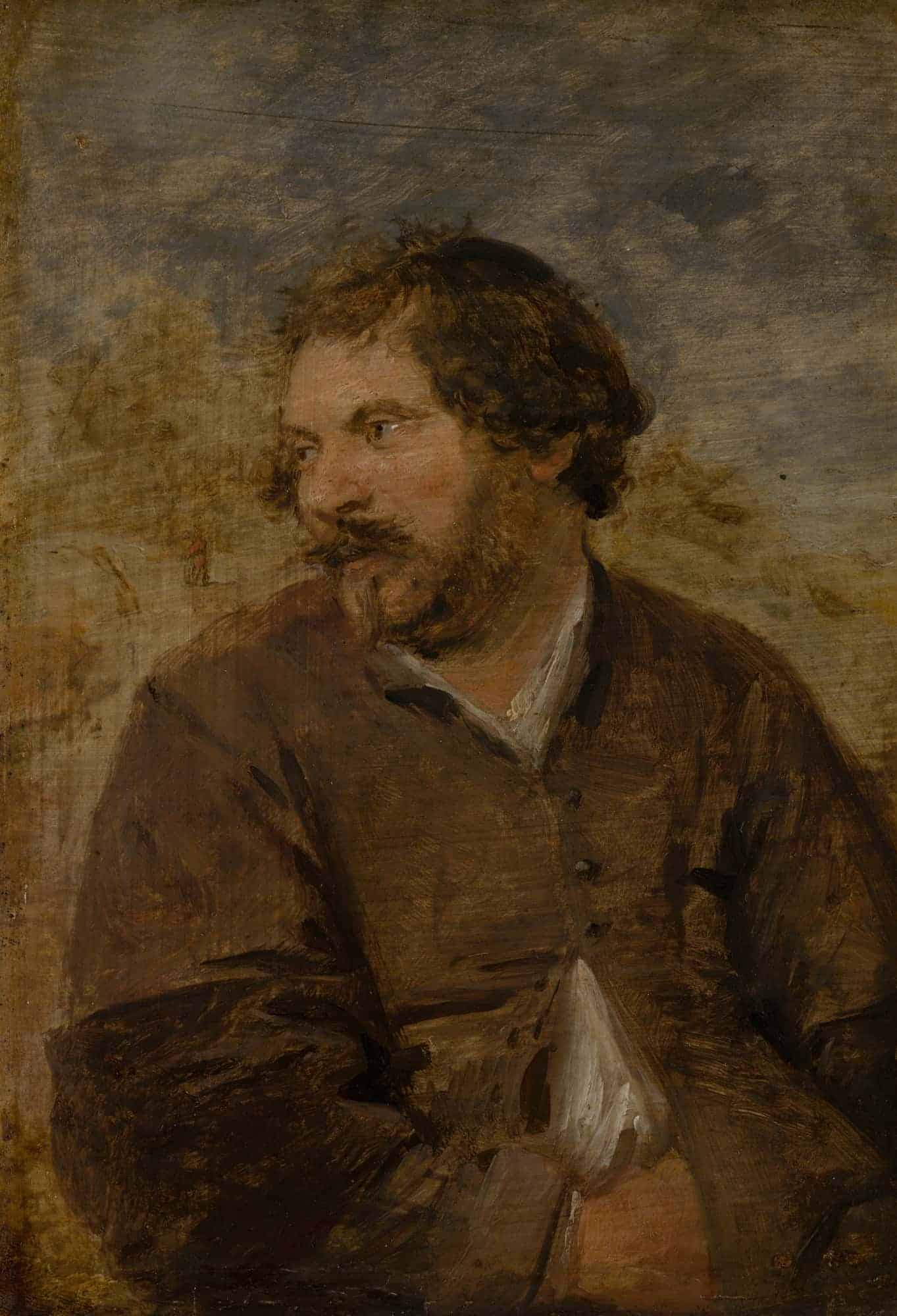 Adriaen Brouwer (ca. 1606-1638), Luxuria, ca. 1634-37, Mauritshuis, The Hague
Adriaen Brouwer (ca. 1606-1638), Luxuria, ca. 1634-37, Mauritshuis, The Hague© Mauritshuis
The painting is part of a series of seven panels, often depicting a rustic figure (a total of six men and one woman) representing one of the seven deadly sins. The series was split up around 1800, and the whereabouts of five paintings are unknown. Another panel from the series (Luxuria) has been in the Mauritshuis collection since 1897. It portrays a somewhat dishevelled man with his hand in a partially open vest, referencing sexual lust among other things.
 Seals on the reverse of Superbia showing coats of arms from Spanish regions
Seals on the reverse of Superbia showing coats of arms from Spanish regions© Mauritshuis
On the back of both panels at the Mauritshuis, identical coats of arms were discovered, with consecutive numbers in the same handwriting: 114 and 115. Research conducted by Olivier Mertens, a specialist in heraldry, revealed that these seals with coats of arms from Spanish regions (such as Castile, León, Aragon, and Sicily) and Austria belonged to Don Juan José van Austria (1629-1679), an illegitimate son of the Spanish King Philip IV. This indicates that the series by Brouwer travelled from Antwerp to foreign countries as early as the seventeenth century, and then became dispersed around 1800.
Rijksmuseum Acquires Four Silver Salt Cellars by Johannes Lutma
The Rijksmuseum has purchased four outstanding silver salt cellars made by the renowned Amsterdam silversmith Johannes Lutma. These partially gilded objects are among the most important examples of seventeenth-century Dutch silversmithing. Two of the salt cellars were previously displayed in the Rijksmuseum from the 1960s onwards; the other pair was held in the Amsterdam Museum.
Prior to the Second World War, all four were the property of Hamburg resident Emma Budge, who was Jewish. Following her death in 1937, the cellars were sold at auction. Following the publication in 2018 of the conclusions of the Restitutions Committee, the descendants of Emma Budge submitted a claim for the two salt cellars in the Rijksmuseum collection, the two salt cellars in the Amsterdam Museum collection, and two objects in the collection of Kunstmuseum Den Haag in The Hague.
On 16 November 2022, the Restitutions Committee issued its recommendation that these objects should be returned to Budge’s descendants. In the case of the salt cellars held by the Amsterdam Museum, the recommendations were binding. The State Secretary for Culture and Media complied with the recommendations, and on 5 December 2022 decided also to return the Rijksmuseum salt cellars to the descendants. On 12 May 2023, the Dutch state and the City of Amsterdam returned the objects to the claimants. That same day, the heirs sold all four salt cellars to the Rijksmuseum.
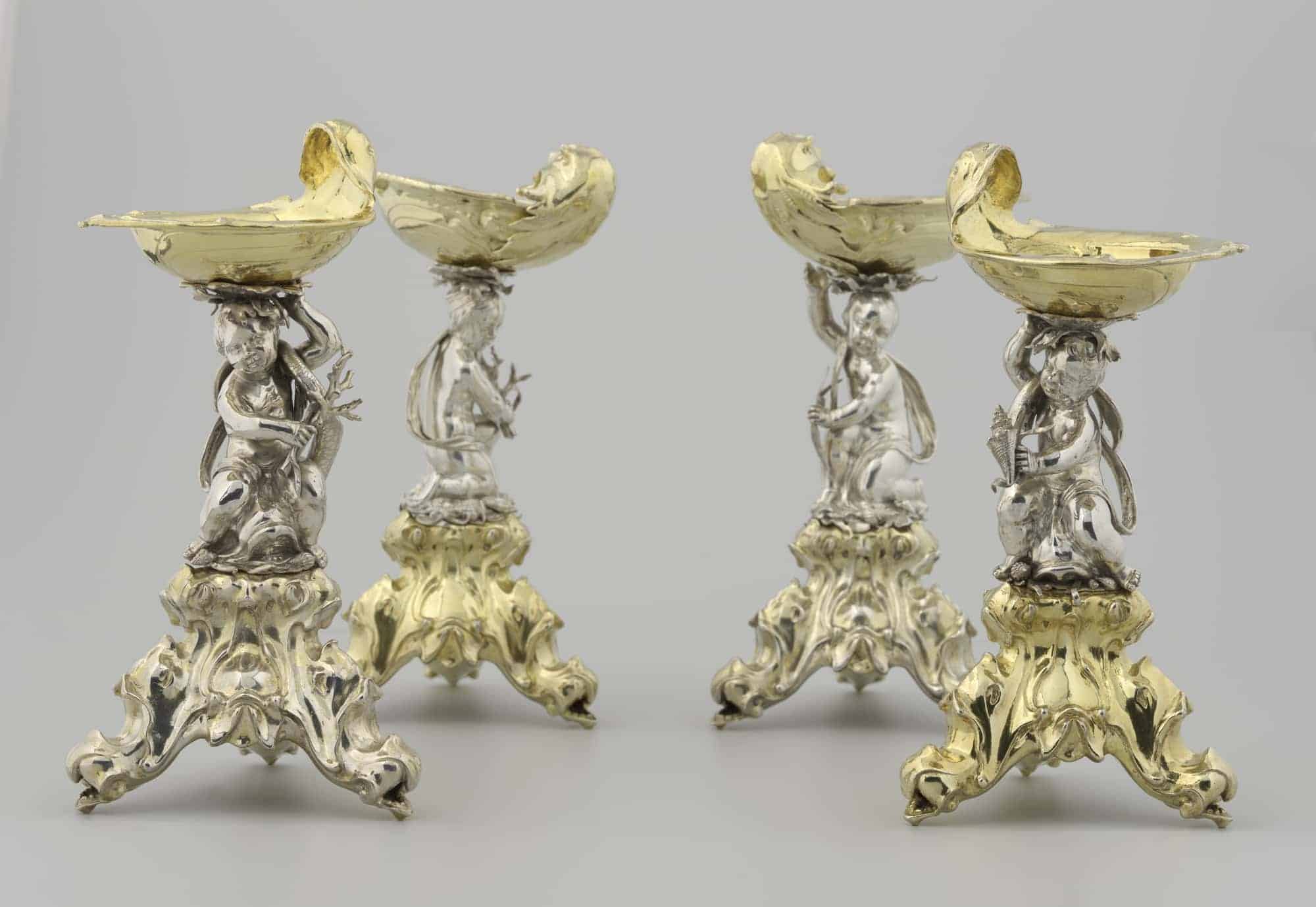 Johannes Lutma (1584-1669), Ensemble of four salt cellars, 1639-43 Rijksmuseum, Amsterdam
Johannes Lutma (1584-1669), Ensemble of four salt cellars, 1639-43 Rijksmuseum, Amsterdam© Rijksmuseum
Johannes Lutma (1584-1669) was Amsterdam’s foremost silversmith in the seventeenth century. The four salt cellars are undisputed masterpieces in his oeuvre, very little of which has survived to the present day. These objects were the first in which Lutma combined the ornamental auricular style with a classical formal idiom. From a historical and art-historical perspective, it is of major significance that Lutma probably designed a large ensemble of objects very early in his career and later produced the constituent elements – including the four salt cellars – in phases over the course of many years.
The identical style used for the feet unifies the ensemble, while differences in detailing in the human figures and salt dishes give the two pairs distinct identities. The constituent elements of the very few other surviving ensembles of this kind from the first half of the seventeenth century are far less well-matched. Costly cellars of this kind would stand on the tables for important banquets given by wealthy art lovers, or at the headquarters of citizen militias or the navy, for example.
On 6 September 2023, the complete ensemble will go on display at the Rijksmuseum, which will continue to draw attention to both the art-historical importance of the objects and the story surrounding their provenance and restitution.
Dordrechts Museum Acquires Large Perspective View by Samuel van Hoogstraten
The Dordrechts Museum has acquired a rare painting by Samuel van Hoogstraten (1627-1678), one of Rembrandt’s most important pupils and one of Dordrecht’s most celebrated painters.
The life-size perspective view (which stands nearly 2.5 meters tall) offers into a palace, where a fireplace is glowing in the basement. The golden fence is a fine example of skillfully simulated light. Past the colonnade and through the doorway, a glimpse of a vast garden can be seen.
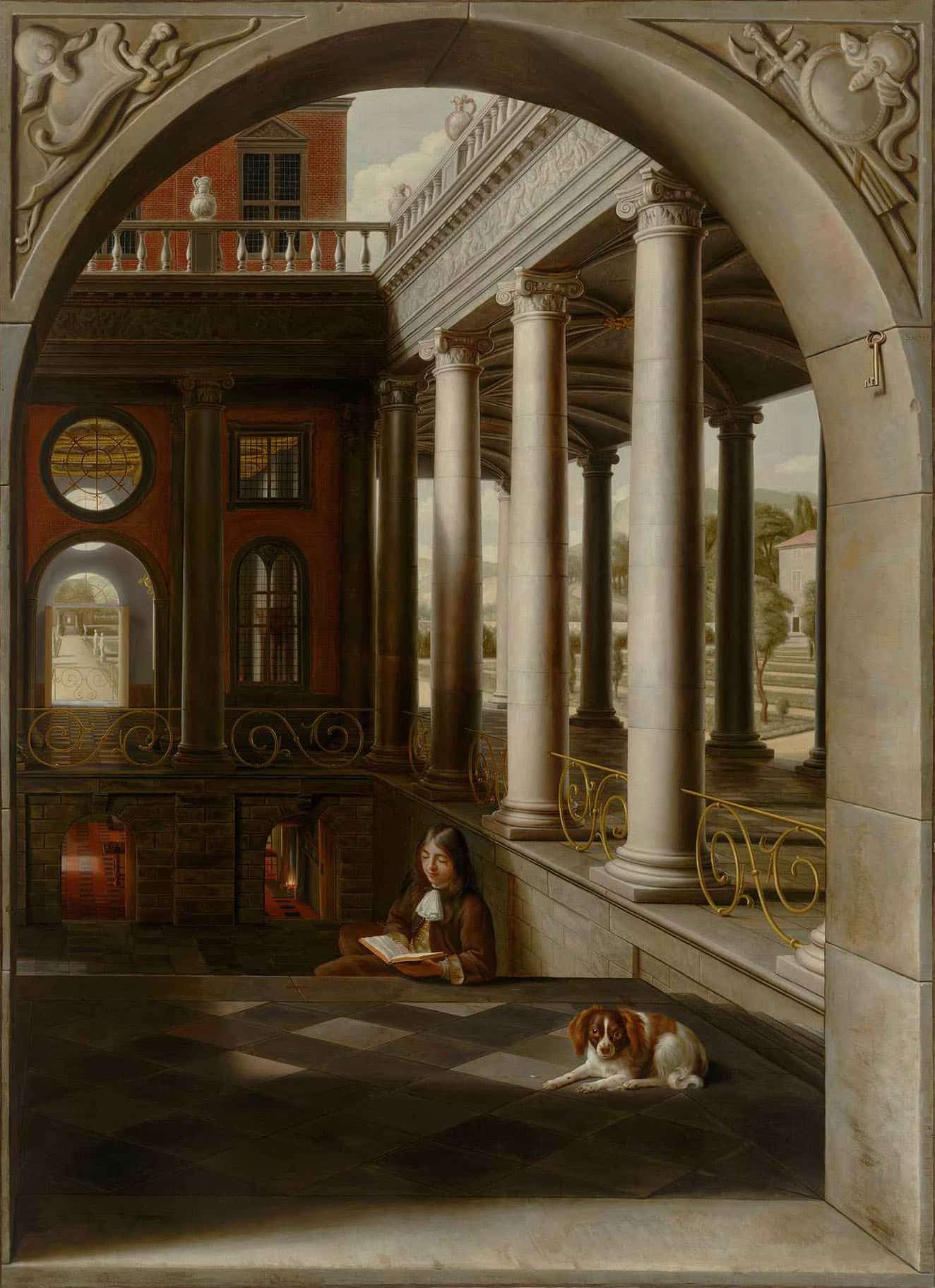 Samuel van Hoogstraten (1627-1678), Perspective View with a Young Man Reading in a Renaissance Palace, ca. 1662-67, Dordrechts Museum, Dordrecht
Samuel van Hoogstraten (1627-1678), Perspective View with a Young Man Reading in a Renaissance Palace, ca. 1662-67, Dordrechts Museum, Dordrecht© Dordrechts Museum
Van Hoogstraten spent much of his life in Dordrecht. In addition to being a painter, he was also a poet and wrote novels and plays. The artist practiced almost all genres in painting: from portraits and still lifes, to perspective pieces such as Perspective View with a Young Man Reading in a Renaissance Palace.
The Dordrechts Museum has the largest Van Hoogstraten collection in the world, now comprising a total of sixteen paintings.
In the video above, curator Sander Paarlberg tells more about the artist and the newly-acquired painting (available with auto-generated subtitles).

